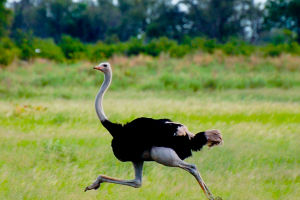Have you ever heard a parrot say "hello" or repeat a funny phrase and thought, "Wow, is it actually talking?" We have too! Parrots are one of the few animals on Earth that can mimic human speech.
But what's really going on when they speak? Are they simply repeating sounds they hear, or is there some understanding behind those words?
Let's take a closer look at this fascinating question and explore how parrots talk, why they do it, and whether they truly understand us.
How Do Parrots Produce Sound?
Unlike humans, parrots don't have vocal cords. Instead, they use a special structure called the syrinx, located at the base of their windpipe. This structure can produce a wide range of sounds by adjusting airflow and controlling muscles in a very precise way.
Parrots also have flexible tongues and strong beak muscles that help shape the sounds they make. That's why they can mimic not just words, but tones, whistles, laughter, and even phone rings!
Why Do Parrots Mimic Human Speech?
In the wild, parrots are extremely social animals. They live in flocks and use sounds to communicate with each other. When kept as pets, we humans become their "flock." Since they don't have fellow birds to chat with, parrots turn to us and start mimicking our sounds as a way to connect and feel included.
They aren't trying to impress us—they're actually trying to fit in! Mimicking is their way of saying, "I'm part of your group."
Is It Just Copying?
Now the big question: are parrots just copying sounds, or do they know what they're saying?
That depends on the parrot and the situation. Most parrots do start by copying without understanding the meaning. However, research suggests that some parrots can go far beyond simple mimicry.
A famous example is Alex the African Grey Parrot, studied by Dr. Irene Pepperberg. Alex could identify colors, shapes, numbers, and even express desires like "want banana." He wasn't just repeating words—he was responding to questions and making choices.
Dr. Pepperberg's work showed us that parrots have high levels of cognitive ability, and some individuals may have the intelligence of a young child.
What's Going On Inside Their Brains?
Parrots have a brain region called the song system, which helps them learn and produce complex sounds. This area is highly developed, similar to parts of the human brain responsible for speech and learning.
In 2015, scientists discovered that parrots also have "shell" regions around their song system, which may be key to their vocal learning. This helps explain why parrots are better at mimicking than many other birds.
Their brain is not only wired for sound but also for social learning, memory, and problem-solving—all important for language use.
Do All Parrots Talk?
Not all parrots are chatty. Some species, are known for their talking skills. Others, like macaws or cockatoos, may learn a few words but prefer other types of sounds.
Also, just like humans, individual parrots have different personalities. Some love to talk and interact. Others are quiet observers who rarely speak, even if they can.
Can They Understand Us?
In some cases, yes. Many pet owners report that their parrots seem to use words in the right context—saying "bye-bye" when someone leaves, or "hello" when the phone rings. While this isn't full language understanding, it suggests that parrots can associate words with actions or events, much like how a toddler learns.
However, parrots do not form sentences or create new words like humans do. Their "language" is more about association and reaction, rather than deep grammar or storytelling.
How Should We Talk to Parrots?
If we live with a parrot or want to interact with one, consistency and clarity are key. Using the same words for certain actions (like "food" when offering treats) helps the bird connect sound with meaning. It's also important to speak with emotion—parrots seem to respond more when we sound excited or happy.
They may not understand every word, but they definitely understand tone, energy, and attention.
Let's Celebrate Their Talent
Whether parrots truly "understand" human language or not, one thing is clear—they are incredibly smart, social, and skilled at communication. Their ability to mimic us is more than a party trick; it's a glimpse into their complex minds.
And honestly, it's hard not to smile when a bird looks at you and says, "Good morning!" with perfect clarity.
What Do You Think?
Have you ever spoken with a parrot? Did it feel like it was answering you? We'd love to hear your experience! These birds remind us that the line between humans and animals is sometimes thinner than we imagine. Let's keep exploring the wonderful ways nature communicates with us—sometimes through feathers and a few funny words.


